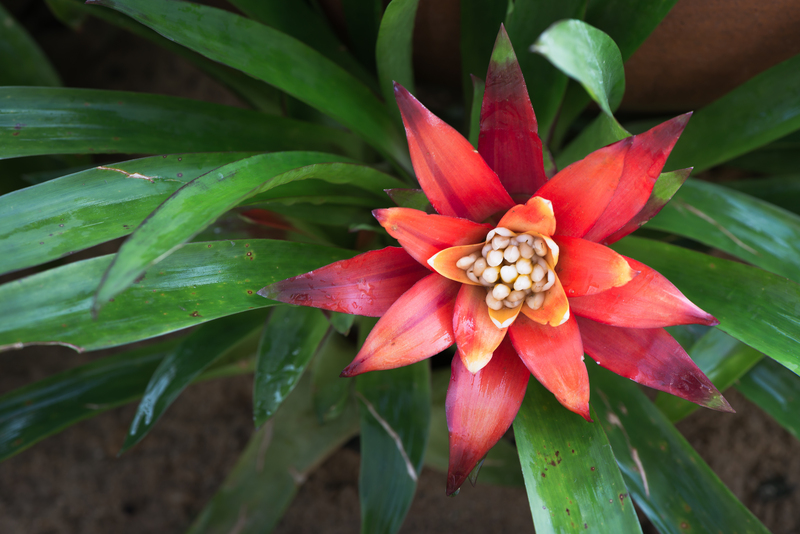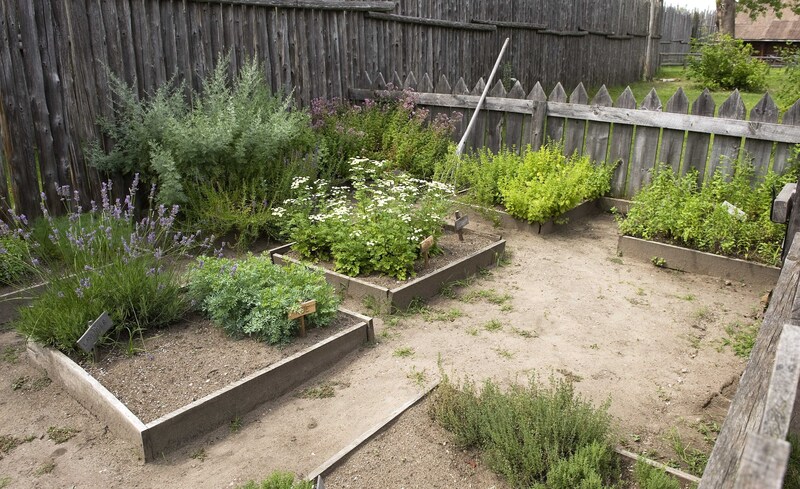Planning a Thriving Child-Friendly Garden with Safety in Mind
Posted on 15/09/2025
Planning a Thriving Child-Friendly Garden with Safety in Mind
Creating a vibrant, child-friendly garden is a rewarding challenge for any parent or caregiver. A garden can inspire young minds, encourage healthy outdoor play, and foster a love of nature. However, careful planning is essential to ensure that this outdoor space is both stimulating and safe for children. This comprehensive guide explores everything you need to know about designing and establishing a thriving garden for children, keeping safety at the forefront of your decisions.
Why Design a Child-Friendly Garden?
More than just a play area, a child-oriented garden acts as a living classroom. It supports physical activity, creativity, and learning, while also helping children develop a lifelong appreciation for plants and the environment. By considering both enjoyment and safety in your garden plan, you create a haven where kids can flourish and families can bond.
Key Benefits of a Safe, Family Garden
- Encourages Imaginative Play: Creative garden features stimulate children's curiosity and ingenuity.
- Supports Physical Health: Outdoor activity boosts strength, coordination, and overall well-being.
- Enhances Learning: Gardening teaches valuable science, sustainability, and responsibility lessons.
- Promotes Social Skills: A garden is a perfect place for collaborative play and group activities.

Assessing Your Space - The First Step in Planning
Before selecting plants or play equipment, take time to observe and assess your existing garden area. Thoughtful analysis helps you identify potential hazards and plan spaces that align with your children's ages, abilities, and interests.
Consider Location and Layout
- Visibility: Ensure that play areas are within your line of sight from the home.
- Access: Design wide, even pathways suitable for strollers and little feet.
- Boundaries: Install secure fencing or clear boundaries to prevent accidental wandering.
Check for Potential Hazards
- Remove toxic plants and ensure all greenery is non-poisonous to children.
- Eliminate sharp tools, garden chemicals, and unsafe water features or cover them securely.
- Check the ground for tripping hazards, uneven surfaces, or hard edges.
Choosing Safe and Engaging Plants
When planting a child-friendly backyard, prioritize safety by choosing non-toxic, sturdy, and easy-to-maintain greenery. Children love to explore with all their senses; consider plants that engage touch, smell, and sight while posing no risk if accidentally ingested.
Recommended Plants for Child-Safe Gardens
- Sunflowers - Tall and dramatic, perfect for creating natural "hideouts" or sunflower houses.
- Strawberries - Tasty, easy-to-grow fruits that are fun for children to harvest.
- Lavender - Aromatic, resilient, and beloved by pollinators.
- Snapdragons - Colorful, interactive, and non-toxic blooms.
- Mint and Lemon Balm (herbs) - Soft leaves, evocative scents, and safe to taste.
Avoid These Plants
- Oleander
- Foxglove
- Daffodils
- Aconitum (Monkshood)
- Dieffenbachia (Dumb Cane)
Always research plant toxicity before introducing anything new to your child-friendly landscape.
Planting Tips for Childproofing Gardens
- Opt for soft ground cover like clover or turf rather than hard paving.
- Use raised beds or container gardens to separate "no touch" areas.
- Keep thorny or spiky plants well away from play zones.
- Label interesting plants with fun, educational signs for curious minds.
Designing Interactive Play Features
A flourishing child-friendly garden goes beyond appearance. Integrate active play zones, secret hideaways, and hands-on educational elements to create a magical outdoor experience.
Fun, Safe Play Ideas
- Mud Kitchens: Allow for messy, creative, and sensory play using safe, natural materials.
- Climbing Frames or Small Slides: Choose equipment with rounded corners and shock-absorbing surfaces underneath.
- Water Play: Install shallow water tables or small fountains (always supervised).
- Stepping Stone Paths: Encourage balance and adventure while guiding little explorers around the garden.
- Nature Hideouts: Willow tunnels or living teepees offer shaded retreats and stimulate imagination.
Safety Priorities for Play Equipment
- Ground softening: Use bark chips, rubber mulch, or sand beneath apparatus.
- Secure anchoring: Fix playframes and swings to avoid tipping or movement.
- Age-appropriate designs: Choose sturdy, simple structures for younger children.
- Rounded edges: Avoid possible cuts or head injuries from sharp corners.
Maximizing Learning Opportunities
Child-safe gardens are perfect places for informal learning. Use your garden as a platform for environmental stewardship, science experiments, and hands-on projects that foster responsibility and creativity.
Incorporating Educational Elements
- Set up a vegetable patch for kids to sow, tend, and harvest their own crops.
- Create a mini wildlife habitat (bee hotels, butterfly houses, or bird feeders).
- Introduce sensory zones with contrasting textures, scents, and sounds - grasses, windchimes, aromatic herbs.
- Build measuring sticks, weather stations, or simple sundials for science discovery.
Prioritizing Safety: Rescue-Ready, Secure and Supervised
While adventure is essential, garden safety for children must always come first. Regularly assess your garden for risks, provide ongoing supervision, and create clear rules for garden behavior.
Best Practices for Preventing Accidents
- Secure Boundaries: Fencing should be well-maintained, at least 1.2m high, and have childproof gates.
- Water Caution: Deter access to deep ponds or swimming areas; always cover or fence off risky water features.
- Tool Storage: Store sharp tools, chemicals, and fertilizers out of reach in locked sheds or cabinets.
- Shade and Hydration: Install shaded zones and ensure ready access to water during warm weather.
Creating & Enforcing Garden Rules
- Never eat anything from the garden without an adult's OK.
- Always wear shoes when outside.
- No throwing stones, sticks, or plants.
- Respect wildlife and plants. Gentle hands only!
Enhancing Accessibility for All Ages
To make your safe garden for children welcoming for kids of all ages and abilities, think about accessibility from the outset. Easy navigation and thoughtful features allow everyone to participate fully in the joys of gardening.
Tips for an Inclusive, Accessible Child Garden
- Wide, level paths: Suitable for wheelchair or stroller access.
- Raised beds: Allow planting and harvesting without bending or stooping.
- Accessible tool storage: Lightweight, child-sized, and within easy reach.
- Sensory elements: Designed for visually impaired or sensory-sensitive children.
Maintaining Your Child-Friendly Garden Long-Term
Creating a child-safe garden is an ongoing process. As children grow and seasons change, revisit your garden's layout and features to ensure continued safety and enjoyment.
Regular Safety Checks
- Inspect play equipment routinely for wear or hazards.
- Confirm boundaries and fencing remain secure and functional.
- Monitor plant growth for overhanging branches or newly invasive growth.
- Seasonally refresh mulch and remove debris or litter.
Involve Your Children!
Empower children to take pride in their garden by including them in:
- Selecting plants and seeds
- Watering, weeding, and harvesting
- Building or painting garden decorations
- Setting up birdhouses or bug hotels
- Learning garden safety routines and sharing reminders with younger siblings
Eco-Friendly & Sustainable Gardening for Families
While planning your family-friendly garden, adopt environmentally conscious habits. Teaching children about sustainable gardening benefits the earth and provides another layer of meaningful, hands-on education.
Sustainable Gardening Practices
- Composting: Set up a simple bin for food scraps and garden waste, turning them into rich soil.
- Water conservation: Use rain barrels or drip irrigation to minimize waste.
- Wildlife support: Include nectar-rich flowers and provide safe habitats for beneficial insects.
- Natural pest control: Introduce ladybugs, frogs, or companion plants instead of chemicals.

Inspiring Garden Design Ideas for Kids
Get creative with your child-safe garden design. Elements that stimulate the senses and imagination turn an ordinary backyard into an outdoor adventure land.
Featured Ideas
- Fairy or dinosaur gardens: Miniature landscapes with figurines captivate young children.
- Edible mazes: Paths lined with berry bushes, peas, or cherry tomatoes for a taste as they explore.
- Giant chalkboards: Mounted fences provide a creative, weatherproof art space.
- Outdoor reading nooks: Cushioned corners beneath tree canopies for quiet storytime.
- Seasonal planting charts: Encourage planning and tracking harvests throughout the year.
Final Thoughts: Cultivating a Safe and Joyful Outdoor Oasis
A thriving, child-friendly garden is more than just a safe space--it's a dynamic environment where memories are made, curiosity is sparked, and a love for nature is planted. By integrating thoughtful design, ongoing safety measures, and interactive, eco-friendly features, your garden can become the heartbeat of outdoor family life. Start planning your inspiring, child-safe garden today, and watch your children--and your plants--grow together, season after season.
Remember: Safety doesn't have to mean sacrificing fun or imagination. With a little planning, you can have it all--a vibrant, adventurous, and protected oasis where your kids can blossom.



